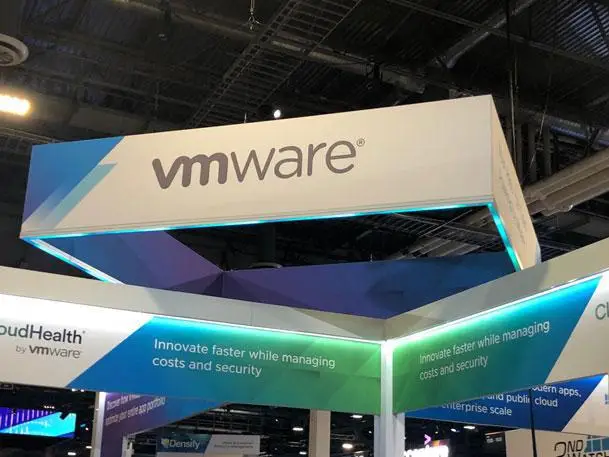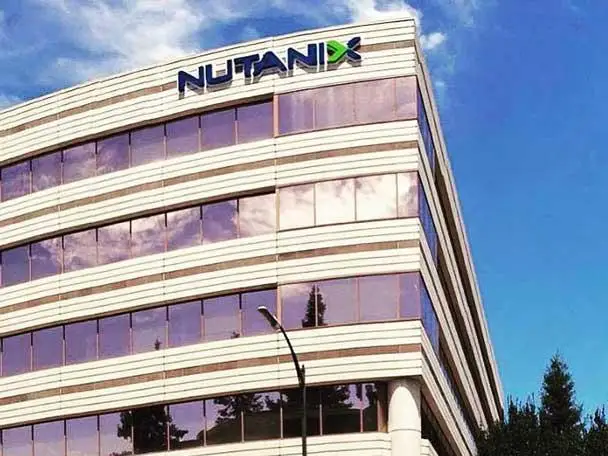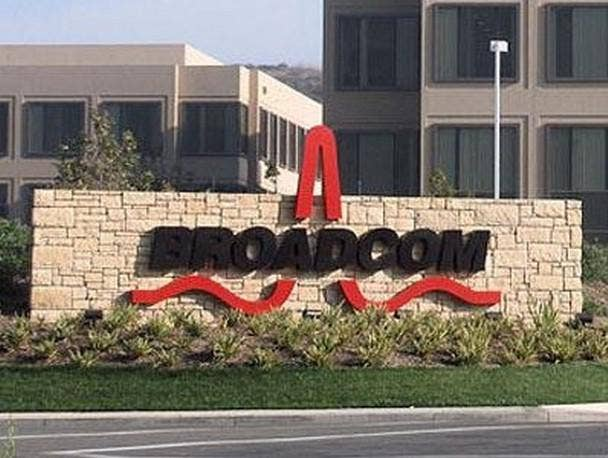Nutanix SVP Dishes On 'Unexpected Consequences’ Of Broadcom’s VMware Changes
'The reason that deals were fulfilled through channel partners, was because it required an incredible scaling of support. Installation is one thing, but the ongoing support is another,’ Nutanix Senior Vice President of Product and Solutions Marketing Lee Caswell says.

Nutanix Senior Vice President of Product and Solutions Marketing Lee Caswell is smiling, but he is worried about VMware.
“Something that hasn’t fully been comprehended, in my view, is that this is not an app. You aren’t supporting an app. Or it’s not like chip design, or something like that. This is a materially different business,” he told CRN in a video interview this week. “It requires ongoing full responsiveness … The reason that deals were fulfilled through channel partners, was because it required an incredible scaling of support. Installation is one thing, but the ongoing support is another.”
[RELATED: WWT CEO On ‘Disappointing’ VMware-Broadcom Strategy And ‘Positive’ HPE-Juniper Merger]
Caswell was the vice president of product and technical marketing at VMware for five years before joining rival Nutanix in 2022.
In a foreboding blog that digs into the “unexpected consequences” of Broadcom’s recent moves with VMware, he cautioned this week that channel partners, as well as Dell, HPE, and Lenovo will likely reduce VMware investments moving forward.
Additionally, Caswell warned that forcing customers to buy bundles of VMware products will result in higher prices.
“Despite Broadcom statements that it would not focus on raising prices, we believe new bundling strategies will drive up effective prices for most customers,” Caswell writes. “For example, vSphere ENT+ customers could see 2x – 3x increases now that this product is only available bundled with vSAN and vRealize licenses – especially if a vSphere customer is not an HCI customer.”
For VxRail – the joint Dell Technologies VMware product beloved by channel partners – Caswell predicts that Dell may consider moving off VMware’s vSAN and to ScaleIO.
“With Broadcom going direct, sales of VxRail would likely require joint selling and shared account control between Dell and Broadcom. Consequently, Dell may attempt to substitute ScaleIO in place of vSAN, even if ScaleIO does not offer an HCI experience.”
Caswell’s blog came out one day before Wall Street analysts at William Blair issued their own note, upgrading Nutanix shares from “market perform” to “outperform” in the wake of what it calls the “disruption” in the VMware partner community.
“VARs say customers are already starting to look at alternatives and planning away from their historical dependence on VMware’s dominant ESX hypervisor—creating a seminal moment for Nutanix AHV to be a true contender to ESX, although this will not happen overnight and will be an easier change for smaller customers,” the firm wrote.
CRN has reached out to Broadcom for comment but had not heard back at press time.
Caswell talked to CRN about the blog, how Nutanix is seizing new business and how Broadcom is setting the table for Nutanix’s big generative AI wins in 2024.

You have this perspective where you have worked at VMware and Nutanix. So why wouldn’t you take the top 2,000 customers direct? It makes sense doesn’t it?
Well, it turns out that infrastructure is a support-intensive product. There’s security risks. You can read about that every day. It turns out that supporting this infrastructure across servers, storage, compute, virtualization — virtualization just by itself meant that you had to go and basically anticipate what was happening on storage — it really became complicated quickly.
So the reason you didn’t do that. The reason that all the deals were fulfilled through channel partners, was because it required an incredible scaling of support. Installation is one thing, but the ongoing support is another.
Something that hasn’t fully been comprehended, in my view, is that this is not an app. You aren’t supporting an app. Or it’s not like chip design, or something like that. This is a materially different business. It requires ongoing full responsiveness.
Why is the channel the better route to market, and why the Nutanix channel?
The margin opportunity remains unchanged in the Nutanix profile. What Broadcom has done is disaggregated the margin pool of what either HCI or even virtualized servers look like.
This means the margin opportunity for channel partners, particularly for the large ones, is limited to commodity hardware. That’s a challenge. You don’t make great margins on commodity hardware. They’re taking the most lucrative part, which is the software piece, which wasn’t blended margin.
Everywhere I go people are worried. They don’t have contracts right now. They don’t really know what that’s going to look like.
Beyond the margin profile, what does the day two experience look like? If you get a support call that pushes your margins down dramatically. So what you really want is a product that you can sell, but that works seamlessly. That’s one of the things that Nutanix has done really well with a single architecture that supports all of our hardware partners, whether its on prem, or on the public cloud. It works with files, blocks and objects. It works with containers.

William Blair, the investment advisory firm, said they expect Nutanix to take share from VMware, based on this channel disruption. Do you agree with that?
I think they called it a “tectonic shift.” Here’s the thing: somewhere between 30 and 40 percent of Nutanix customers run VMware. They run the vSphere hypervisor, and they’ve done that for years because they were familiar with vCenter. They were trained. They made their careers in VMware. It’s a great partnership in that sense. You could leverage your hypervisor and have access to the Nutanix stack.
What we’re finding though over time, you’ve seen our AHV (Nutanix Acropolis Hypervisor) sales go from like 50 percent to 69 or 70 percent.
What’s happening is the hypervisor is largely a commodity, but there was never a compelling reason to shift. Now there is. So, we’re using the same underlying technology that’s used by every major hypervisor. Enterprise-proven, tested, ready.
So, for those customers who are running us in a joint manner, they now have a compelling reason to say, ‘Hey, listen. I can’t buy enterprise plus as a standalone product anymore. As that starts to play out with new deals, now they have a compelling reason to say, ‘OK if I’m running Nutanix already, I’m going to go pick AHV. That’s number one.
Number two is if they’re looking at the cost of storage-based systems, classic three-tier architecture has actually gone up because of hypervisor element. The pricing is going up.
This could be the time to move to a server-based infrastructure, software-defined. What’s happening is the pace of change in hardware is all happening on servers. If you want new CPUs, from Intel or AMD, if you want GPUs from Nvidia or AMD, if you want new networking technologies, they’re coming to servers first because servers are the volume play.
We’ve never had as unpredictable an environment. For resellers thinking, ‘Who is the best partner to go with and make sure I’m ready to support not just vX, but containers. What if I have file, and block, and object?’
You can do that. And you can train one team to support all of those, and you can deploy it on-prem or in the public cloud. That’s incredible operating leverage for the resellers in an environment where their training and budgets might be strained because of the amount of channel margin that’s vaporizing because of the Broadcom direct play.

One of the things I have heard from technology vendors is you don’t sell customers products they don’t need. It’s bad for the relationship. One of the messages from Broadcom has been that VMware products will be sold as bundles going forward. Partners have said this includes items customers need but also “shelfware” they will never use. What is your take on this strategy?
If you’re a petite and you get an extra, extra large at a special discount that will probably not be a big win for you. This concept sounds innocuous enough at first, which is, “We’re going to give you more value.” The risk is that you end up getting things you don’t use.
I think the challenge right now is that for many customers is the inability to buy standalone products.
So like NSX, for example, is sold standalone and is no longer sold standalone. Same with vRealize, that’s the management suite. That was sold as a standalone option, now it’s bundled.
So you have to get these bundles. Also, one of the things that hasn’t been called out is that vSan now is licensed on a per terabyte basis, which is a capacity-based modeling system. That’s going to require customers to do a lot of planning.
Right now these are all licensed just on the basis of the CPU. That was the promise of HCI. You managed by VM or container and licensed by core. Storage products by contrast, are managed by LUN (a unique identifier for physical or virtual storage) and licensed by terabyte capacity.
This is a really interesting model where now some people who were like “Hey I just put whatever I want in and I don’t have to worry about capacity” now are going to have to do planning around “Hey am I within my licensing constraings within the new licensing model.”
And, by the way, that means that every channel partner is going to have to recertify how they support each one of those products. That’s a big lift.

This is a model that has worked for Broadcom before, though, right? Not to play devil’s advocate, channel partners are kicking, but Broadcom has executed this before and achieved the profitability that Wall Street has demanded. So is Nutanix taking notes?
From a financial engineering standpoint it’s a pretty interesting play. You can’t exit right away. It’s like if the price of gas doubles. I don’t throw away my car. I still have to drive, but I start thinking more carefully about where I go and how to drive less.
What I think is going to happen based on this. People are going to cap their existing investment. Everything new will go on new infrastructure. Some of that could go to the cloud. Some of that could come to Nutanix. Some of the customers will look for new ways of doing things.
Most customers, when they have unmanageable risk, basically say, “I’m just going to put everything into ‘new.’ That’s particularly good for us in the AI space by the way. AI is all new.
Where do you think the margin is going to be greatest going forward? An old legacy database product? Probably not. How about new AI workloads? Services? Cloud integration. You’re going to have a really interesting opportunity I think.
AI is probably the ultimate, hybrid multi-cloud workflow; large language models on the public clouds, retuning happening in your data center, inferencing at the edge. So if you know that this idea that data and applications are going to span a hybrid multi cloud world is going to be more prevalent over time. So how do I make sure that all the new applications going new infrastructure that new infrastructure should look filed like and then it's server based software defined? We think we're in a great position to help.